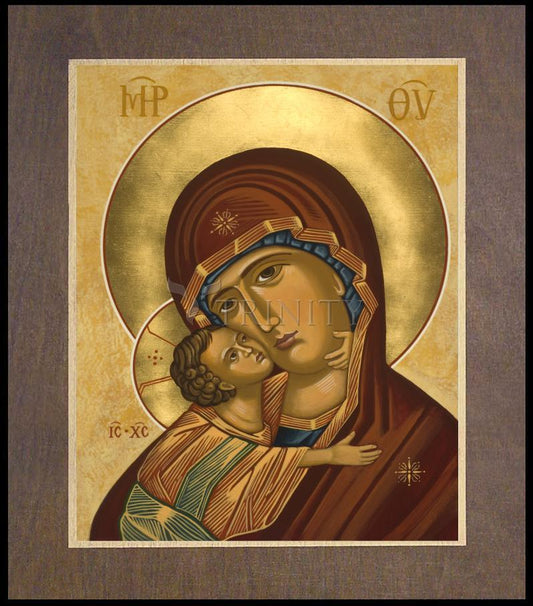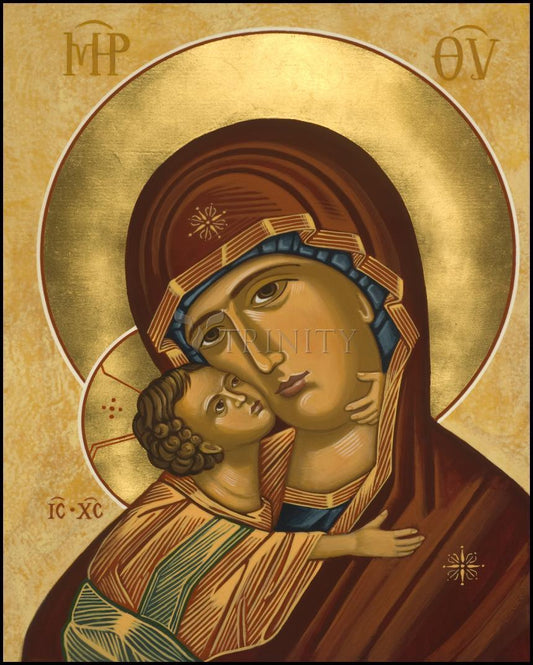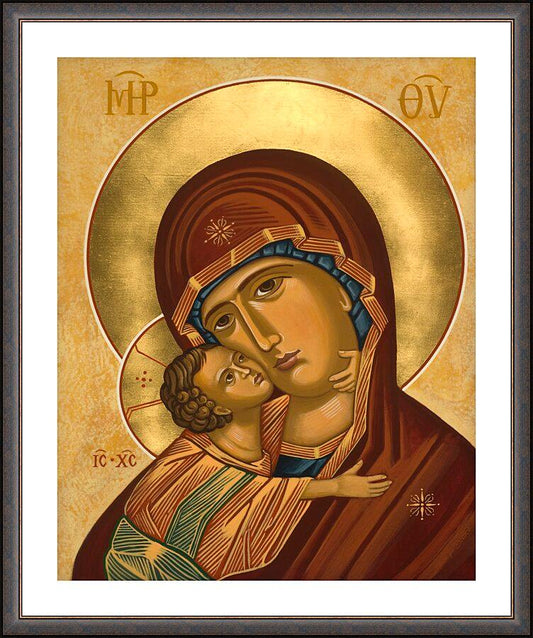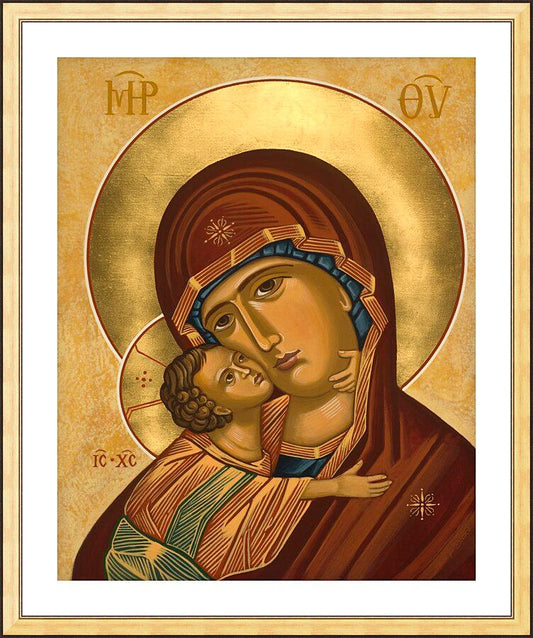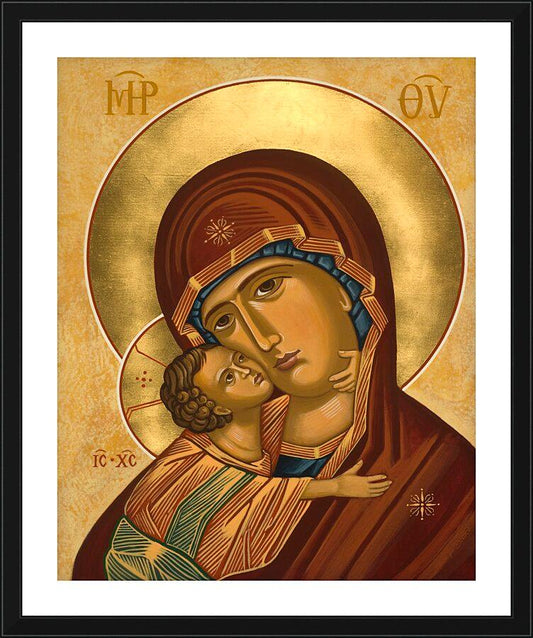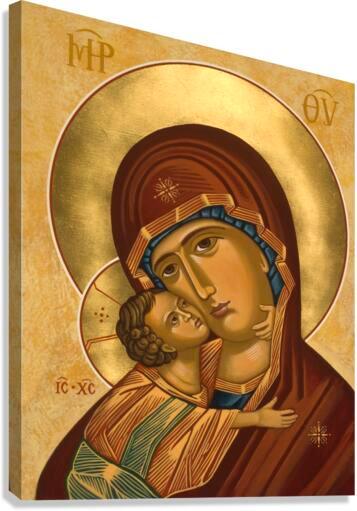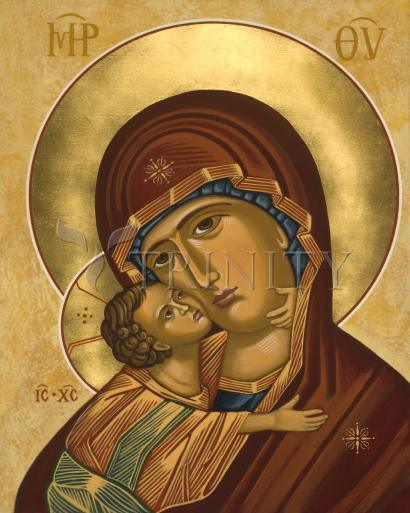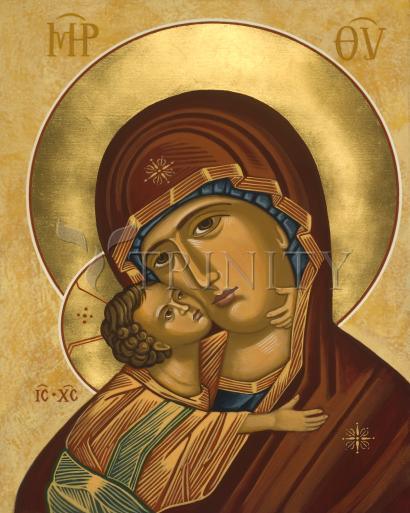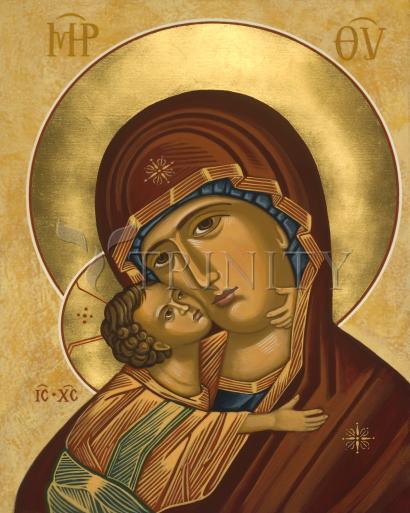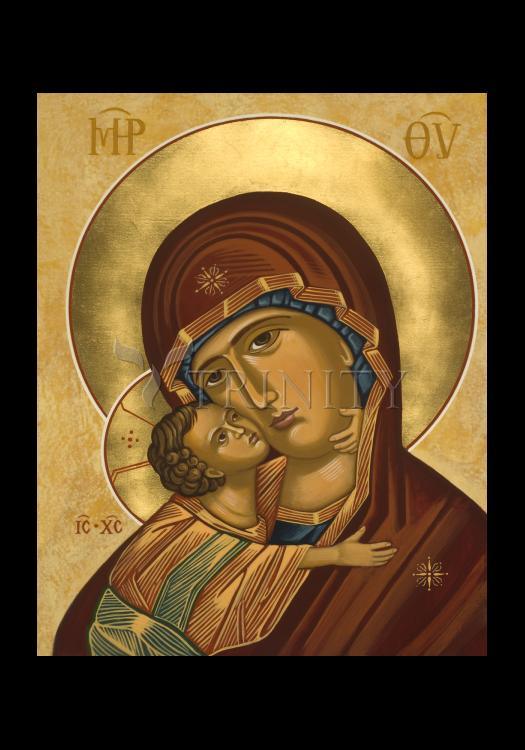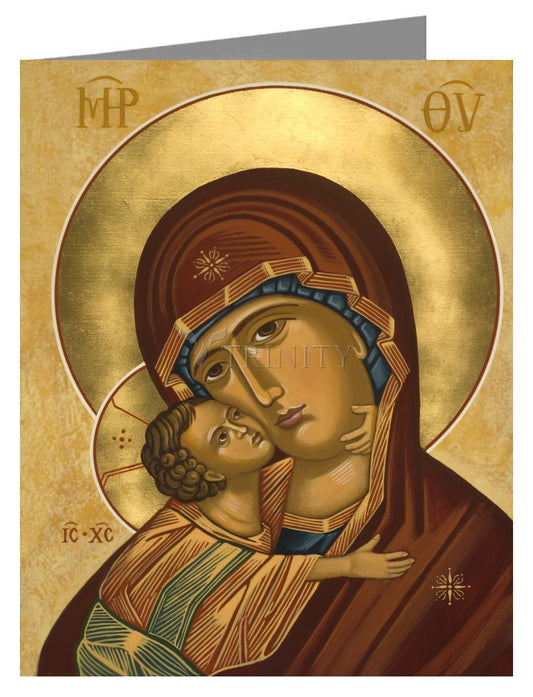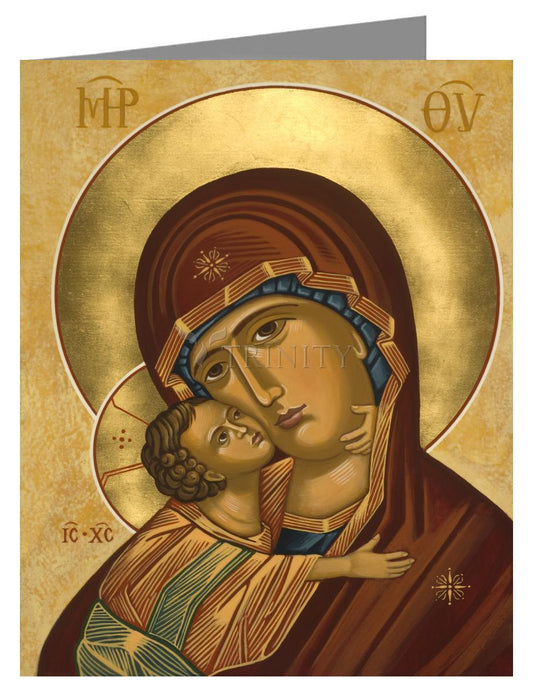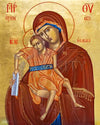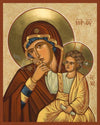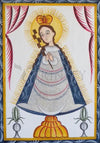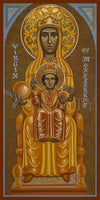One of the most famous and most beautiful of all icons of the Mother of God is that of Our Lady of Vladimir, also known as the Virgin of Vladimir. She is depicted cheek to cheek with the Divine Child, whose arms caress her, yet the image is strong and noble in workmanship, completely free from "sweetness" and sentimentality.
It is the great example of the type of icon that the Russians call tenderness; the Greeks express the same. It was probably painted in Constantinople in the twelfth century, but is first heard of in Kiev, whence it was taken in 1155 to the city of Vladimir. According to tradition, he horses pulling the cart taking the icon to Kiev stopped in Vladimir and refused to budge from that spot. The Assumption Cathedral was built there in honor of the Blessed Virgin, and to house her image.
It became famous for wonders and was reverenced as Russia's most sacred image, so that it was in 1395 enshrined in the cathedral of the Assumption in the Kremlin at Moscow during the time of Tamerlane's invasion. Several times the Tartars were beaten back under its inspiration and it was carried to critical places in time of distress. It was taken to the battlefront during World War I, and there are some who say the Communist Joseph Stalin had the icon taken up in an airplane and flown around Moscow during the German invasion of World War II. A few days later, the German army retreated.
All the tsars were crowned and patriarchs installed in the presence of this image, up until the revolution. It has been reproduced many times in copies and in book illustrations. The icon is now displayed in the Tretyakov Gallery in Moscow, and the Russian calendar commemorates the feast of Our Lady of Vladimir on May 21.



